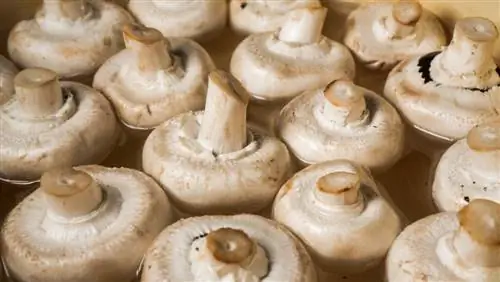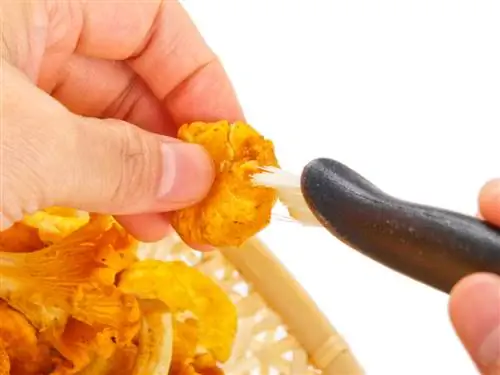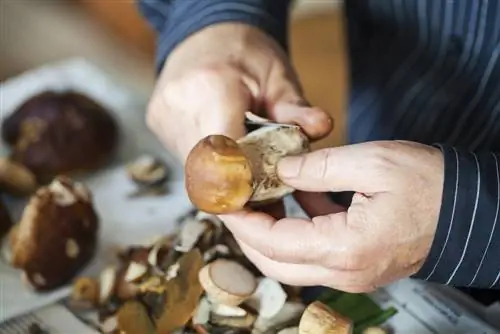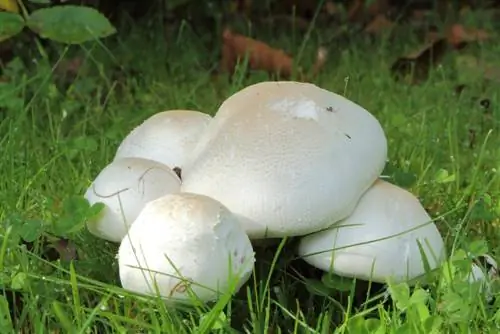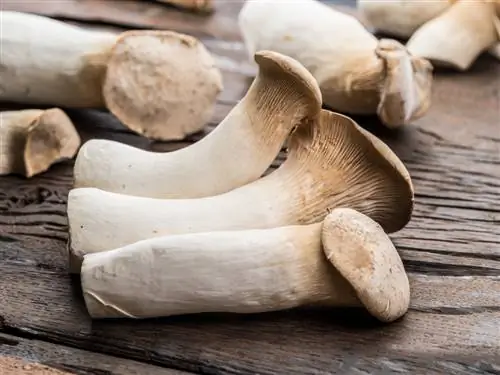- Author admin [email protected].
- Public 2023-12-16 16:46.
- Last modified 2025-06-01 06:02.
Whether in a mushroom cream soup, in an omelet or as a mushroom cream sauce for Jägerschnitzel: Mushrooms are simply an indispensable part of the kitchen. However, the mushrooms need to be treated in a very special way; after all, they are very sensitive and will quickly take offense if they are prepared incorrectly. Just cleaning them has a big impact on their aroma and bite.
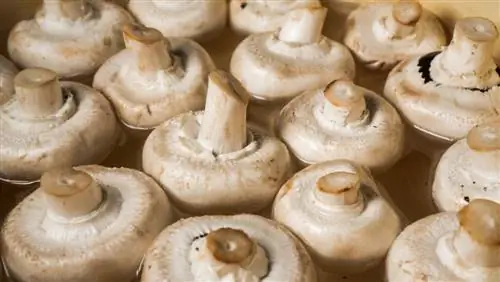
How do I clean mushrooms correctly?
The best way to clean mushrooms is to remove coarse dirt with a soft brush, then gently rub off the finer dirt with a kitchen towel and finally cut away bruises or dry stem ends with a sharp knife.
Before cleaning: check mushrooms for freshness
Basically, you should only use fresh mushrooms, not just for aesthetic or taste reasons. You can recognize fresh specimens by the closed or only slightly open slats on the bottom of the hat - the further they have opened, the more time has passed since the harvest. Old mushrooms also tend to quickly become moldy. If this is the case and you see fine, white mold threads on the mushrooms, you should no longer eat them. Instead, they belong in the household waste if mushroom poisoning is to be avoided. However, some slightly brownish pressure spots on the mushroom cap are harmless: mushrooms are very sensitive to pressure. Simply cut away these areas with a sharp vegetable knife.
When should you peel mushrooms?
Older people in particular have learned that mushrooms need to be peeled. Maybe your mother or grandmother peeled the delicate skin off the mushrooms' hats. Of course, this method is perfect for quickly cleaning the mushrooms - but at the same time you remove valuable vitamins that are in the mushroom skin. Therefore, you should only peel or skin mushrooms if they are actually very dirty and cannot be cleaned in any other way.
Do not wash mushrooms
If the mushrooms have soil on them, you are quickly inclined to wash them thoroughly in clear water. However, this is not a good idea because mushrooms absorb the washing water like a sponge. Although this water is lost during frying, the mushrooms retain a spongy, rubbery consistency. They also lose a lot of their aroma. The same applies to mushrooms, which should be eaten raw in salads etc. Only if they are very dirty can you clean the mushrooms individually under running, clear water. However, then rub them well with a dry kitchen towel.
Cleaning mushrooms correctly - this is how you do it
If you are not allowed to wash or peel mushrooms, how else are you supposed to remove any soil or substrate without leaving any residue? There is a tried and tested method for this, for which you need a thick, soft bristle brush and paper kitchen towels.
Clean the mushroom roughly with a brush
First of all, gently remove any coarse dirt with a soft brush that has been previously cleaned and dried in clear water. Use this like a hand brush - simply “sweep” away any stuck-on soil and other dirt. You can use normal round brushes, but you can also buy real mushroom or champignon brushes in stores.
Care out fine cleaning with a kitchen towel
Once the coarse dirt has been removed, take a clean paper kitchen towel and gently rub each individual mushroom thoroughly. Be careful not to grip the mushrooms too tightly - like all mushrooms, they quickly develop brownish, unsightly spots if they are pressed too hard.
Cut away pressure points with a knife
Finally, cut away the existing bruises and the dried end of the stem and can then process the mushrooms as desired. A sharp vegetable knife is best suited for this.
Tip
Brown mushrooms (also known as “stone mushrooms”) are cleaned and prepared in the same way as white ones - you don’t need to follow any special tips or instructions here.

